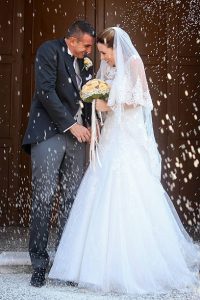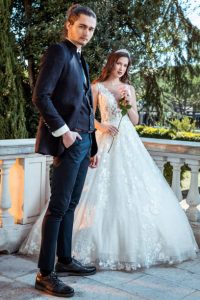The time has come when photographers can sync their powerful off-camera flashes to the Apple iPhone using Profoto’s new AirX software for syncing. Being the skeptical person I am, I wanted to find out myself if the use of 500 W of strobe light on your mobile phone was just a joke or if it could be a game changer for the industry. Today, I’m still with a sigh of relief.
And I’m sure many of you are thinking: it’s the same thought that I’ve been thinking about for years. Yes, mobile phones are extremely useful, and you can produce professional-looking pictures with a minimal amount of equipment, so long as the natural light source is adequate. However, the fact is that cell phones are just 12 megapixels (with tiny sensors, too) and do not communicate with the high-end flash systems that we’ve become used to, and relying on the iPhone to shoot professional photos isn’t the best option for the full-time professional photographer. No matter how many iPhone photos we’ve posted on our Fstoppers Youtube Channel, I’m aware of what limitations exist with “iPhoneography” all too well.
Some additional limitations and issues come with shooting using your phone, for instance, workflow issues, transfer of images to long-term storage resolution and proprietary file types and raw options dynamic range, limitations on quick lens options, interruptions to telephone calls, and other reasons that make DSLR and mirrorless choices very appealing. I can appreciate all of those. For me, however, among the biggest frustrating features of a smartphone camera is the inability to communicate with Flash. This means that Profoto’s application using AirX does not just sync their Flash that is recorded simultaneously through the phone’s camera. It is more complex and requires a complicated Bluetooth sync, a method that has been patent-pending by Profoto. For more information on the process by which AirX was developed and the way it is used with xenon light tubes, take a look at the piece published on Medium from Profoto VP of Technology Tobias Lindback.
Below are some photos from my wedding shoot with lovely Mya Puryear. Mya is an amazing Broadway dancer and a singer who hails from New York City, and it’s quite amazing having the honor to capture her in the exact dress she wore for their wedding day. As you can see, exposing the entire scene caused Mya to be completely underexposed. In contrast, the exposure of Mya made her dress, as well as the whole set, overexposed. This is why Flash is a must. When I correctly exposed my shot, even with the speed of a shutter that was 1/2000th of a second, I was capable of lighting Mya independent of the light from outside, which resulted in a picture that was well-balanced and detailed. The way you shoot provides your photos with more of the look of a fashion-forward style. This isn’t to say that photos with natural light aren’t good; however, in this bright and bright light, I believe that the highlights are too bright for me.
Exposed for scene, exposed for bride, and both exposed with Flash
You can observe in the photos above that the Profoto B10 Plus could easily outshine the bright four-o’clock sun, and in actuality, I could have two more stops of light available! Flash photography doesn’t just mean overcoming the sun, however. Sometimes, it’s beneficial to give your photographs an extra dramatic appearance when shooting in the shade, when the light is uniform and soft. In the set of photos below, you’ll explore the possibilities when shooting using natural lighting exposed to the background nat, natural light exposed to the subject, and even strobe light that can overpower the ambient light. If you have dark skin tones against a white gown, it’s usually difficult to make use of the exposed image for the dress since Mya gets too dark. I do like both the natural light middle image and the striking strobe shot to the right. The ability to create these two looks in the same shoot is very important to me, and it’s amazing to achieve this feat with my mobile phone.



